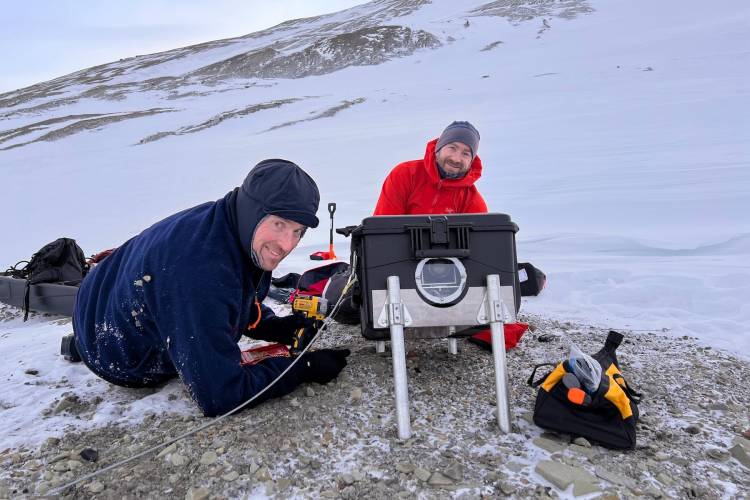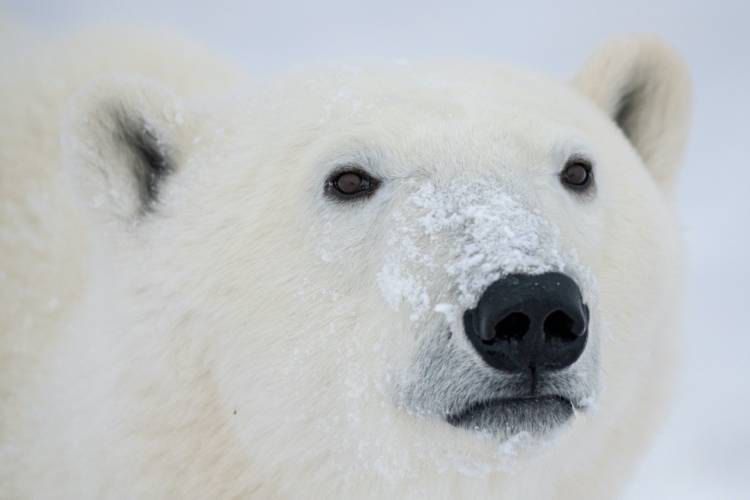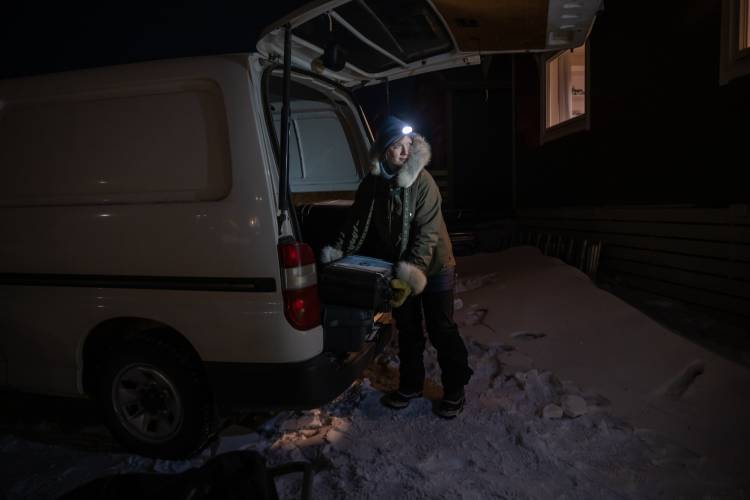As a scientist and somewhat of an adventure-seeker, I've experienced a number of times in my life when curiosity outweighed my basic natural instincts to avoid danger. This leads me to do things that, when I step back, don't make much rational sense. Staring into the mouth of a polar bear den yesterday, I felt that familiar feeling creep back.
As part of our ongoing maternal den study on Alaska's North Slope, our team enters and measures snow dens after polar bear mom and cubs have left to hunt seals on the sea ice. We take every precaution to make sure that the bears are gone when we enter dens. But there is always the slight chance that the family hasn't left or that another bear has moved in to escape the elements.
Seeing a polar bear in the wild is an amazing experience, but bumping into one in a claustrophobic den is nightmarish. Because we aren't anxious to home-deliver a meal to a hungry bear, we are extremely cautious (and jittery) when we enter a den. Luckily, the mother bear and her cubs were long gone yesterday, leaving behind a pretty impressive den.
When a female polar bear digs a den in the late fall, she will search out the best possible snowdrift—one where she runs the lowest chance of being discovered by other bears. After digging in and settling down, she will then give birth to her cubs, and they will spend the next couple months feeding and resting.
That being said, after exploring a polar bear den, it quickly becomes apparent that resting is not all that's going on! In the den that we just explored, the cubs had done a fair amount of digging. They had excavated a few smaller chambers, tunnels, and even tore into the tundra itself. Industrious little buggers.
It's easy to imagine a frustrated mom being cooped up under the snow with a couple of rambunctious balls of white fluff. This helps explain why mother bears tend to look so relieved when they emerge for the first time in the spring and finally have a minute to themselves.
Squeezing through the den and its different chambers yesterday, I was again struck with a deep appreciation for a creature that has somehow evolved to live in one of the most inhospitable places on the planet. It's hard to picture the cramped darkness that pregnant and nursing bears call home for months. It helps you comprehend why female bears are so protective of the young that they have fought so hard to bring through their first winter.
The whole process occurs in complete isolation and on the verge of starvation. It's an incredible lesson about sacrifice that we can glean from the natural world, and one that is important to me on a scientific level and in a very personal way as well.
















